SST subject is one of the core subjects in the curriculum of Class 10th of the Indian Education Board. So, every Indian education board will conduct the Class 10 SST Board Paper 2024 in the upcoming few months. SST subject is vast and comprises of domains like History, Geography, and Political Science. So, it becomes hectic to manage such a large syllabus and find important questions for the board exam in 2024.
As a student, you need not worry about the questions that can be asked in the board exam, as our expert faculty have prepared the most expected board paper for the Class 10 SST subject. The most expected board paper has been made by the experts who have been formulating the board exam paper for the last 20 years. Class 10 students must go through the board exam paper 2024 (expected) given below.
Class 10 SST Board Paper 2024
Expected Class 10 Social Science Board Paper 2024: The CBSE Class 10 SST Exam will be held on March 07, 2024. We must therefore do everything possible to perform at our best on the Class 10 SST Test right now. Students should practice using the expected Class 10 SST Board Paper 2024 as much as they can in order to be prepared to answer questions in the real exam environment.
The SST subject is also known by the name Social Studies or Social Science. For the convenience of class 10 candidates, our Adda247 Expert faculty sets up the Expected Class 10 Social Science Board Paper 2024, which is based on the current CBSE Class 10 Exam pattern. Solve the Expected Class 10 SST Board Paper 2024 and compare your answers to the solution key provided below if you plan to take the Class 10 SST Board Exam in 2024.
Class 10 Social Science Sample Paper 2024 with Solutions
The CBSE board has also released the Class 10 Sample paper for the SST subject. The sample paper are another trustworthy reference material for the board exam that give students a glance of the type of questions that are asked in the board paper. The sample paper and its solution for the CBSE Class 10 SST subject 2024 is given below for download.
Expected Class 10 Social Science Board Paper 2024
Like the official CBSE Class 10 SST sample paper, the Adda247 Class 10 SST Board Paper 2024 has a maximum score of 80. The Class 10 SST Board Paper 2024 consists of a total of 6 Sections from Section A to Section F, just like the actual exam paper. See the mark distribution for the Class 10 SST Board Paper 2024 below.
- Section A contains 20 MCQs, each worth one mark.
- Section B contains four questions worth two points each.
- Section C contains five questions worth three points each.
- Section D contains four 05-point questions.
- Section E contains three case-based integrated units of assessment (04 marks each) with subparts of 1, 1, and 2 marks.
All questions are required. However, an internal choice in two 5-point questions, two 3-point questions, and two 2-point questions has been provided. In Section E’s two-mark questions, an internal choice has been provided. - Section F contains five 05-point questions.
CBSE Class 10 Social Science (SST) Previous Year Question Papers with Solutions
Social Science (SST) Class 10 Important Questions 2024
Class 10 SST Board Paper 2024 Section A
SECTION A
( 20 Multiple Choice Questions of 1 mark each)
Q1. Against which Act did Gandhiji decide to launch a nationwide Satyagraha movement?
(a) The Government of India Act 1919
(b) Indian Council Act of 1909
(c) Rowlatt Act
(d) None of these
Q2. What is a person who sorts and sews wool according to its fibers called?
(a) Proto
(b) Stapler
(c) Fuller
(d) None of these
Q3. Which of the following crop is produced mainly in alluvial soil?
(a) wheat
(b) Paddy
(c) Maize
(d) All of the above
Q4. Under whose chairmanship was the demand for ‘purna Swaraj’ accepted in the Lahore session of the
Congress?
(a) Rajendra Prasad
(b) Abul Kalam Azad
(c) Jawaharlal Nehru
(d) Vallabhbhai Patel
Q5 Which soil is found in the plains of North India?
(a) Black soil
(b) Mountain soil
(c) Red soil
(d) Alluvial soil
Q6. In which year did the Indian entrepreneur Dwarka Nath Tagore set up six joint stock companies in
India?
(a) 1820
(b) 1830
(c) 1840
(d) 1850
Q7. Match the following items given in column A with those given in column B.
| Column A | Column B |
| I. Nationalist Congress Party | 1. 1999 |
| II. Bahujan Samaj Party | 2. 1984 |
| III.Communist Party of India | 3. 1925 |
| IV.Indian National Congress | 4. 1885 |
Choose the correct answer from the option given below:
(a) I-3, II-1, III-2 & IV-4
(b) I-1, II-2, III-3 & IV-4
(c) I-4, II-3, III-1 & IV-2
(d) I-2, II-1, III-4 & IV-3
Q8. Why was Dandi March started?
(a) To run a movement against British oppression
(b) To free the arrested agitators
(c) To break the salt law
(d) None of these
Q9. What type of soil is found in West Bengal and Punjab?
(a) Red soil
(b) Alluvial soil
(c) Black soil
(d) None of these.
Q10.Who was the Viceroy of India at the time of the Civil Disobedience Movement?
(a) Lord Mountbatten
(b) Lord William Bentinck
(c) lord Irwin
(d) None of these
Q11.Sariska Tiger Reserve is located in which state?
(a) Madhya Pradesh
(b) Rajasthan
(c) Jharkhand
(d) Chhattisgarh
Q12.Assertion (A): Natural gas is referred to as an environment-friendly fuel.
Reason (R): Natural gas contains low carbon dioxide emissions.
(a) Both A and R are true and R is the correct explanation of A.
(b)Both A and R are true, but R is not the correct explanation of A.
(c) A is true but R is false.
(d)A is false but R is true.
Q13.In Which of the following states is the Kalpakkam Nuclear Power Plant located?
(a) Karnataka
(b) Tamil Nadu
(c) Kerala
(d) Rajasthan
Q14.Which one of the following countries is the largest producer of jute in the world?
(a) China
(b) Germany
(c) Sri Lanka
(d) India
Q15.Study the picture and answer the question that follows:
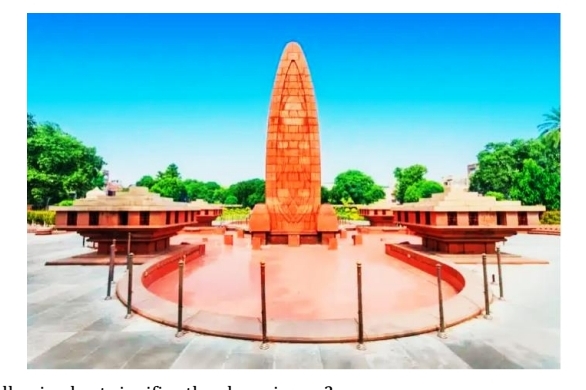
Which of the following best signifies the above image?
(a) Kargil War Memorial
(b) National War Memorial
(c) Jallianwala Bagh
(d) None of these
Q16…………….. Is a low-grade brown coal that is soft with high moisture content.
(a) Peat
(b) Lignite
(c) Anthracite
(d) Bituminous
Q17.Which among the following issues currency notes on behalf of the central government?
(a) State Bank of India
(b) Punjab National Bank
(c) Reserve Bank of India
(d) All of the aboveQ18.Globalization so far has been more in favour of ………
(a) Developing countries
(b) Developed countries
(c) Poor countries
(d) None of these
Q19.What does dictatorship mean?
(a) Rule by one person
(b) Rule by few people
(c) Rule by everyone
(d) None of these
Q20.The United Nations Monetary and Financial Conference was held at Bretton Woods in the USA in
which year?
(a) 1940
(b) 1944
(c) 1948
(d) 1950
Class 10 Social Science Board Paper 2024 Section B
Section-B
( 4 Questions of 2 marks each)
Q21. What are developed resources?
Q22. Who is the author of the famous book ‘Hind Swaraj’?
Q23. What are the two benefits of banks?
OR
Suggest any two ways to improve the usage of Solar energy.
Q24. Define Democracy.
Expected Class 10 SST Question Paper 2024 Section C
Section-C
( Five Questions of 3 marks each)
Q25. Explain four differences between Bangar and Khadar.
OR
Why has India adopted a multi-party system? Explain.
Q26. Why did Gandhiji decide to withdraw from the Non-Cooperation Movement?
Q27. Why do people deposit money in the bank?
Q28. Explain the standard methods of a democratic.
Q29. Write the characteristics of alluvial soil.
SST Class 10 Board Paper 2024 Section D
Section-D
( Four Questions of 5 marks each)
Q30. Explain the main features of federalism.
OR
Describe any five efforts made to reform political parties in India.
Q31. How do banks play an important role in the economy of India? Explain.
OR
Write the major factors that encourage globalization.
Q32. Explain five types of ‘industrial pollution.’
Q33. Discuss the expected outcomes of democracy.
OR
Describe the main causes of the French Revolution?
Social Science Class 10 Question Paper 2024 Section E
Section-E
( Three case-based Questions of 4 Marks Each)
Q34. Read the given extract and answer the following questions:
Coarse, medium, and fine organic and inorganic mixed particles on the upper surface of the earth are called ‘soil’. When soil is removed from the upper surface of the soil, the layer which is often obtained is called rock. ‘Soil Science’ (Pedology) is a major branch of physical geography in which the scientific study of soil formation, its characteristics, and its distribution on the surface are done.
The Indian Council of Agricultural Research has divided the soil of India into 8 classes. The Central Soil Conservation Board was established in 1953 for soil conservation. A research center has been set up at Jodhpur in Rajasthan to study the problem of deserts. The main types of soil found in India are as follows: – Alluvial Soil, Red Soil, Black Soil, Laterite Soil, Saline and Alkaline Soil, Peaty and Other Organic soil, Arid and Desert Soil, Forest Soil
Most of the area in India is found in alluvial soil, which is also known as loamy soil. Alluvial soil is found in bout 43.4 percent of the total area of India. This soil has been formed by the deposition of rivers, but the amount of nitrogen and phosphorus is found less in alluvial soil. The place where alluvial soil is found, it is very necessary to apply urea fertilizer for the production of crops. Black soil is the second most used soil in India after alluvial soil. That’s why if seen from the point of view of the area, black soil has second place in India. Black soil is most commonly used for agriculture in India in the state of Maharashtra and secondly in the state of Gujarat. This soil is formed due to the formation of basalt rock due to volcanic eruptions. Whereas in South India black soil is known as ‘Regur’ (Regur).
1. The Indian Council of Agricultural Research has divided the soil of India into how many classes?
2. When was the Central Soil Conservation Board established for soil conservation?
3. By what name is black soil known in South India?
Q35. Read the given extract and answer the following questions:
Transport is the means with the help of which we carry people and material from one place to
another. The world’s first train was run in 1825, it was run from Manchester to Liverpool in England. The first train in India was run between Mumbai to Thane (34 KM) on 16 April 1853 AD during the reign of Lord Dalhousie. This train was operated by coal, the name of this first train was BLACK BEAUTY. The Air transport is the fastest and the costlier mode of transport. It was started in 1911 in India between Allahabad and Naini. In 1995, the International Airport Authority of India and the National Airports Authority were merged to form the Airports Authority of India. The authority manages the Civil Aviation Training College at Allahabad and the National Institute of Aviation Management and Research in Delhi. Water transport in India is one of the cheapest modes of transportation. There are six national waterways set up by the Inland Waterways Authority of India in 1986.
1. The first train in India was run between Mumbai and Thane on 16 April 1853 AD during the whose reign?
2. When was the world’s first train run?
3. When did air transport start in India?
Q36. Read the given extract and answer the following questions:
Dwarkanath Thakur (1794–1846), was the founder of the famous Thakur (Tagore) family of
Jorasanku in Calcutta. He earned immense wealth by doing business with the help of the British. Dwarkanath Thakur founded the Union Bank, the first bank to be opened by Bengalis. You took a prominent part in the then social and religious reform movements. He was one of the earliest members of the Brahmo Samaj founded by Raja Rammohan Roy. Dwarkanath ji led the Brahmo Samaj till 1843, after which his son Devendranath Thakur took over its leadership. He visited Europe twice in 1842 and 1845 AD and met Queen Victoria at her palace. With both his hands he squandered money in such a way that in the end, he was in debt. He was called Prince (King) because of his charity and generosity. He died in London in 1846 AD.
1. Which bank was founded by Dwarkanath Thakur?
2. Which society was led by Dwarkanath Thakur?
3. How many times did Dwarkanath Thakur travel to Europe?
Class 10 SST Board Paper 2024 Section F
Section-F
( Five questions for 05 Marks )
Q37a. Two places A and B have been marked on the given outline map of India. Identify them and write their correct names on the lines drawn near them.
(a) Indian National Congress session at this place in 1911.
(b) The place where established of Kalpakkam Nuclear power plant.
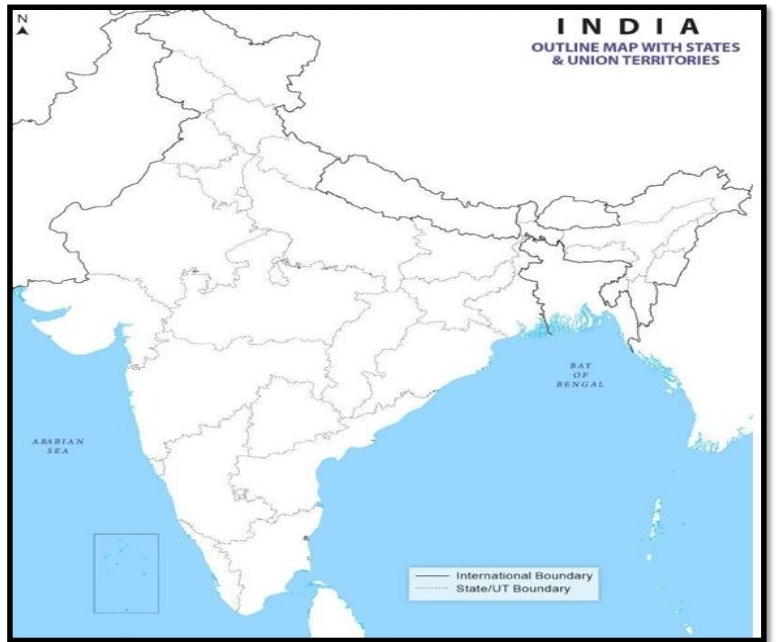
37b. On the same outline map of India locate and label any THREE of the following with suitable symbols.
a. Silk Industry: Mysore
b. Woollen Industry: Ludhiana
c. Namrup thermal power plant
d. Cotton Textile Industry-Indore
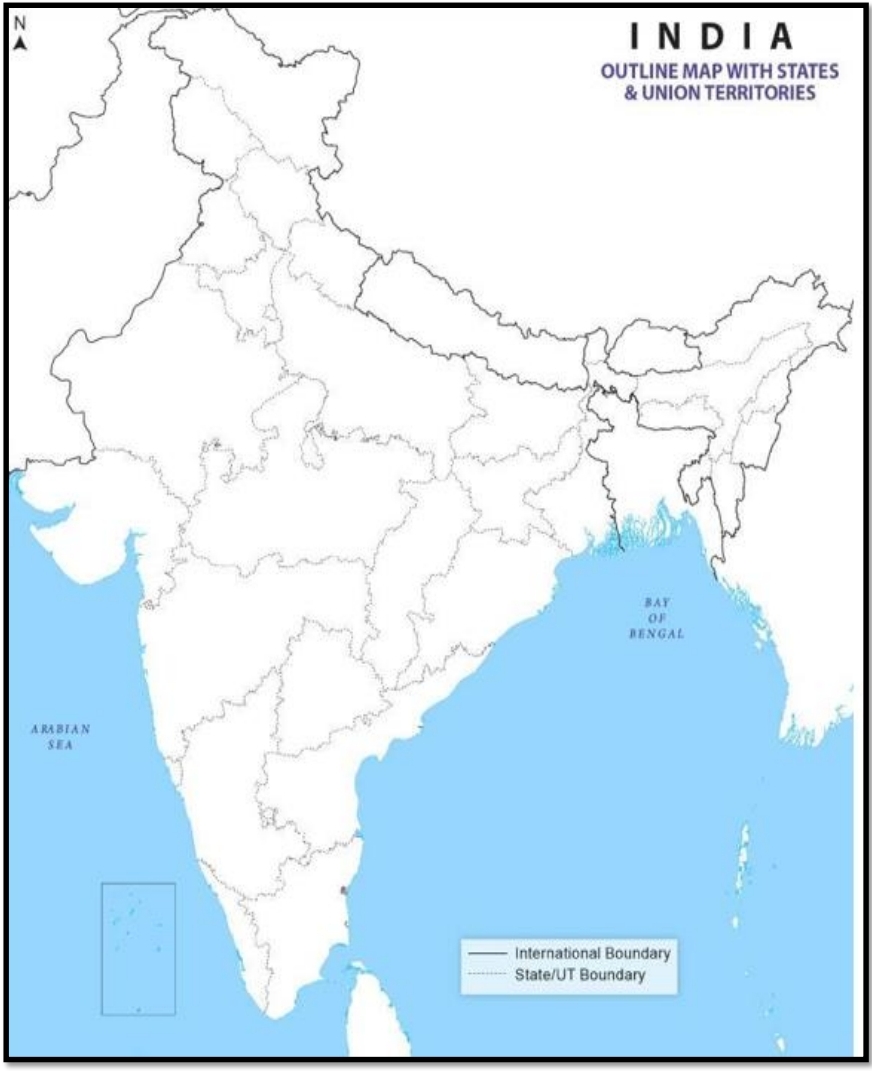
Class 10 Board SST Exam Paper- With Solutions
We also offer comprehensive answers to the Class 10 SST Board Exam Paper 2024. After completing the Expected Class 10 SST board paper 2024, students can review their marks. By doing this, they will not only be able to increase their board marks, but will gain confidence to appear without any fear in the upcoming board exam 2024.
| Class 10 SST Expected Question Paper With Solutions Download |

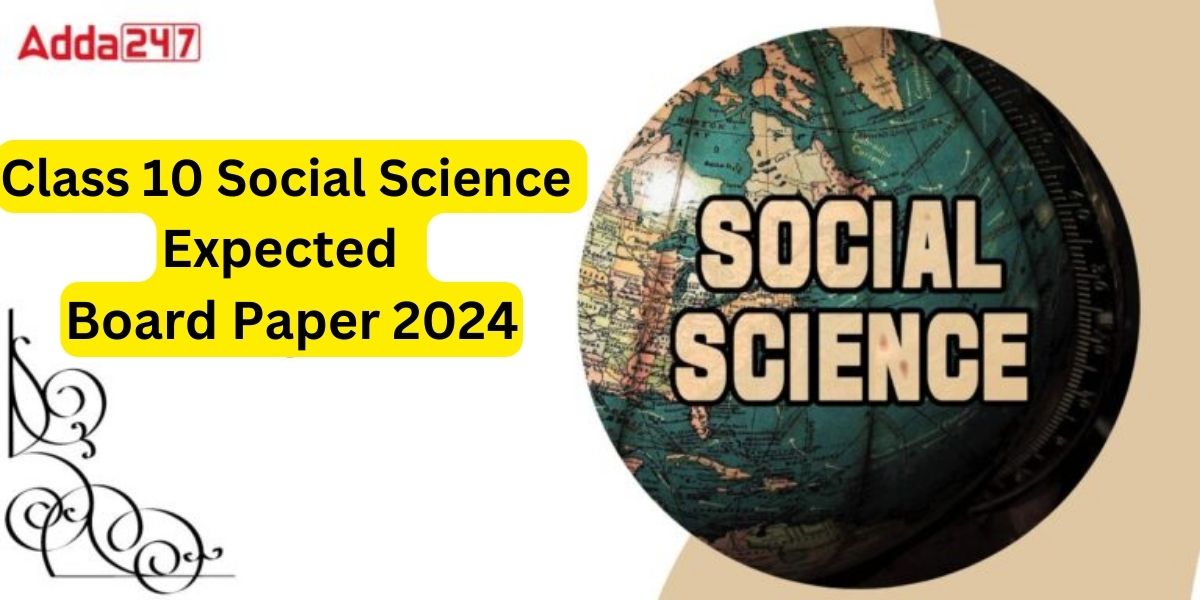








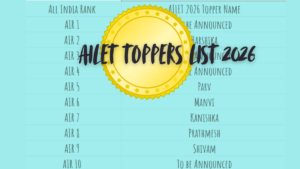 AILET 2026 AIR 1: Check Full Toppers Lis...
AILET 2026 AIR 1: Check Full Toppers Lis...
 AILET Result 2026 OUT, How to Download S...
AILET Result 2026 OUT, How to Download S...
 CUET PG Crash Course 2026: Subject-Wise ...
CUET PG Crash Course 2026: Subject-Wise ...






